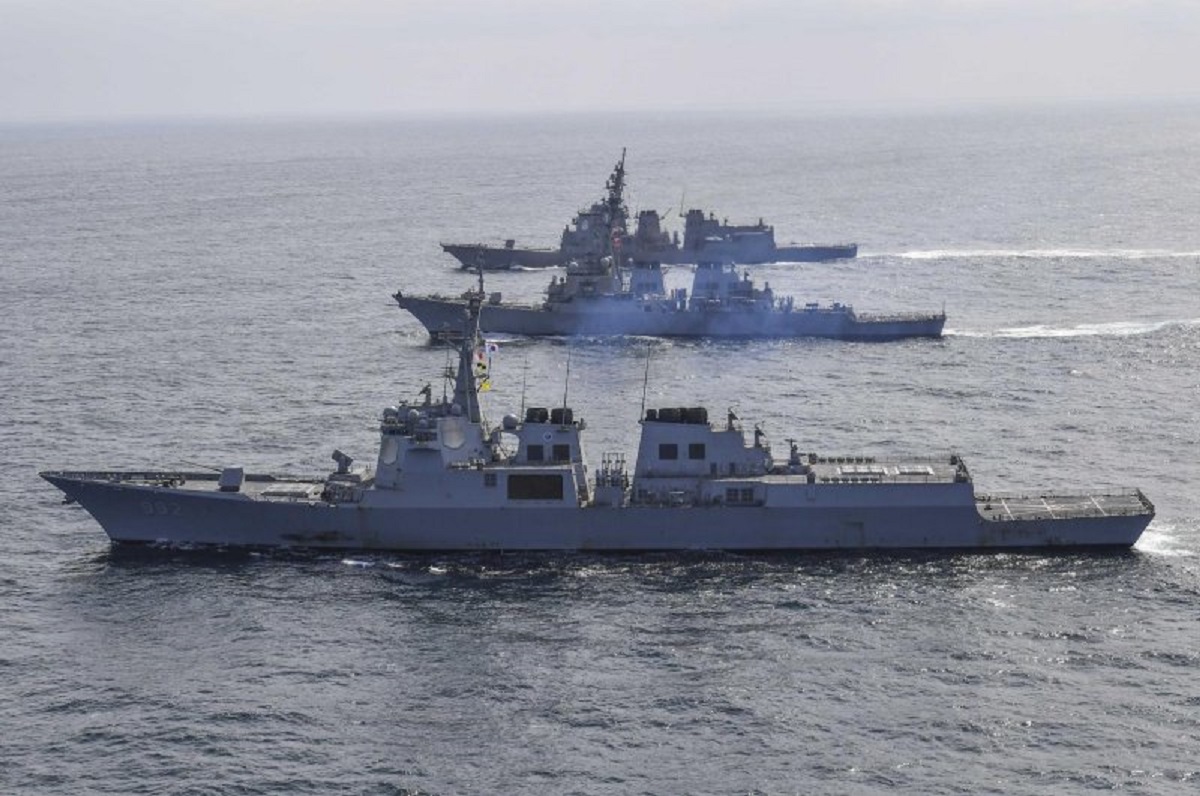Trilateral Seaborne Ballistic Missile Defence Exercise off Korean Peninsula
The United States, South Korea and Japan rehearsed their seaborne missile defence in international waters in a move to improve security co-operation and respond better to North Korea’s evolving missile threats.
The guided-missile destroyers Yulgok Yi I, the USS Benfold and the JS Atago trained together in the Sea of Japan, or the East Sea, South Korea’s Ministry of National Defence said April 17. All three are equipped with the Aegis Combat System, shown capable in tests of intercepting ballistic missiles.
The drill included detecting and tracking simulated ballistic missiles and sharing that information between the ships, according to the ministry.
The trilateral follows what North Korea claimed was a successful test of a solid-fuel intercontinental ballistic missile April 13. The new ICBM, dubbed the Hwasong-18, boosts North Korea’s “nuclear counterattack posture” and offensive capabilities, the north’s Korean Central News Agency said.
The South Korean armed forces described the projectile as a medium- to long-range ballistic missile that flew an estimated 620 miles (~1,000 km) before splashing down in the sea; Japan’s Joint Staff said it suspected the launch vehicle was a high-angle ICBM.
Meanwhile, South Korea and Japan resumed their “two-plus-two” talks of senior diplomatic and security officials in Seoul after a five-year halt, amid a thaw in relations following a years-long feud over wartime history issues.
South Korean president Yoon Suk-yeol has pledged to move the ties beyond the past and visited Tokyo in March for the first time in 12 years as the country’s leader. The three nations had agreed at talks in Washington to hold regular missile defence and anti-submarine exercises in their efforts to boost diplomatic and military co-operation. –shp/adj/mgm (Pix:ROK Ministry of National Defence)


